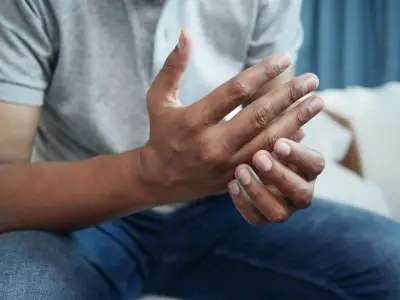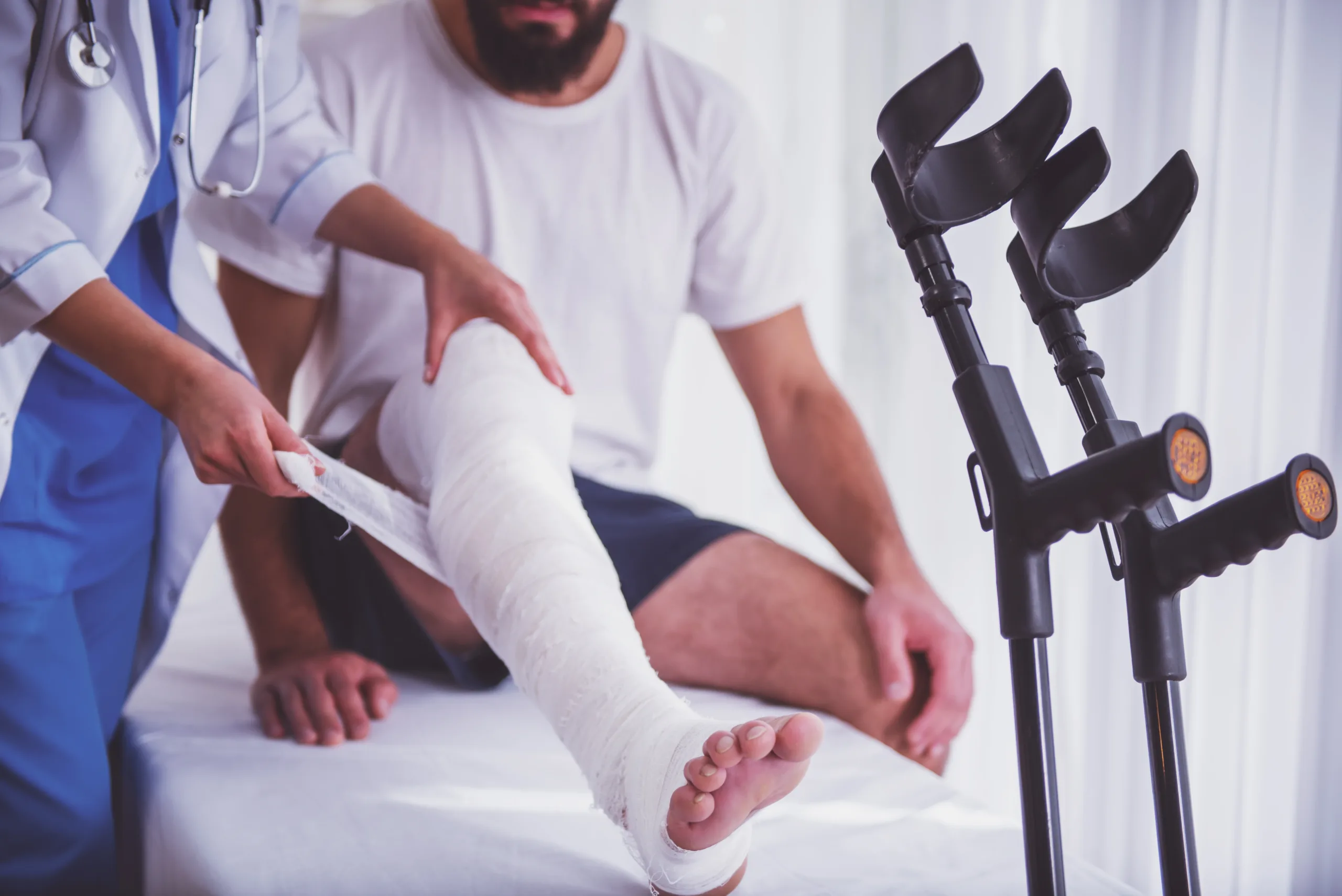Experienced Personal Injury Attorney in Monroe, LA
“Pain and suffering” is the general term that refers to the intangible damages an accident victim may endure. However, the legal definition of what constitutes pain and suffering varies. This group of damages typically involves physical discomfort and a wide range of psychological effects, including mental anguish, loss of enjoyment in life, depression, and anxiety.
Accident victims may pursue financial compensation for their economic losses and pain and suffering damages through an insurance claim or legal action. Before seeking monetary compensation, a personal injury lawyer from E. Orum Young Law can assist you in determining the value of your suffering and other non-economic damages.
If someone else’s negligence caused your injuries, you might be entitled to financial compensation. The calculations for pain and suffering will rely on the circumstances of the accident and the degree of the damages because each personal injury case has a unique combination of facts and circumstances. Our skilled Monroe attorney can help determine how much you deserve and fight for your right to receive it!
What Is Pain and Suffering?
Physical pain and suffering
The plaintiff’s physical injuries have caused them to experience physical agony and suffering. It comprises not only the discomfort and pain the claimant has already experienced but also the negative consequences the defendant’s negligence will probably cause them to experience in the future.
Mental pain and suffering
Mental suffering is more of a side effect of the physical consequences. It refers to any negative emotion an accident victim has due to dealing with the physical pain and stress of the accident.
This category commonly includes:
- Mental anguish,
- Emotional misery,
- Diminished enjoyment of life,
- Fear,
- Embarrassment,
- Anxiety, and
- Shock.
More severe forms of mental anguish can manifest as:
- Anger,
- Depression,
- Fatigue,
- Sexual dysfunction,
- Mood swings,
- Sleep difficulties, or
- PTSD (post-traumatic stress disorder).
Like physical pain and suffering, mental pain and suffering encompass the repercussions that the victim has already experienced and the pain and suffering they will almost certainly continue to undergo in the future.
What Are Examples Of Pain And Suffering
 Let’s examine a few scenarios where pain and suffering could occur for car accident victims.
Let’s examine a few scenarios where pain and suffering could occur for car accident victims.
Imagine someone had many fractured bones and a serious concussion due to a car accident. That accident was quite serious. The claimant’s injuries led to a severe loss of appetite, difficulties sleeping, and feelings of depression and rage. Due to these issues, the claimant was recommended to a psychologist and a therapist. The claimant is entitled to be compensated for mental pain and suffering due to the accident because all of these issues are directly tied to the accident.
Even after physical injuries have healed, mental pain and suffering can occasionally become so severe that they keep the victim from returning to work. In this instance, the accident victim’s depression may last long after healing their shattered bones and concussion. The victim would still be eligible to file a lawsuit for any damages connected to mental pain and suffering, such as income loss.
Using Expert Testimony and Medical Records to Demonstrate “Pain and Suffering”
In some lawsuits, your doctor or another medical expert may be called as a witness to describe the usual physical impact of your injuries from pain, discomfort, and limitation of movement standpoint. Your medical records in a personal injury case will describe the type and extent of your injuries. A psychologist or therapist may play the same function in demonstrating the mental component of your “pain and suffering” if you have experienced a significant psychological or emotional injury.
How Do You Calculate Pain and Suffering?
Insurance companies, judges, and juries consider numerous factors when calculating what damages are awarded for pain and suffering. There are no tables that juries can consult to determine the amount they will award. In most jurisdictions, judges simply urge juries to decide what would be a fair and reasonable sum to pay for the plaintiff’s pain and suffering by using their good sense, knowledge, and experience.
Multiplier Method
You may be familiar with the concept of “multipliers” in personal injury lawsuits, where pain and suffering are valued at a multiple of the injured party’s overall medical expenses and lost wages (sometimes known as the claimant’s “special damages”).
The “multiplier” is frequently calculated to be between 1.5 and 4, meaning the pain and suffering is worth 1.5 to 4 times the claimant’s damages. However, the “multiplier” notion does not apply in every personal injury case and is merely a basic estimate. It is beneficial in minor injuries if the overall damages are under $50,000. However, even in little situations, you should exercise extreme caution while using the “multiplier.”
Per Diem Method
The “maximum medical improvement” date is the day the victim fully recovers from their injuries. It can also be the day a medical expert determines that they will never be in better health than they are now due to the accident. The pain and suffering per diem method allocate a specific monetary value to each day the victim sustains injuries, from the accident to the date of “maximum medical improvement.”
The value of the pain and suffering portion of a personal injury case is influenced by a wide range of other factors. These consist of:
- if the plaintiff will or is a reliable or unreliable witness
- How likable the plaintiff is
- Whether the claimant is trustworthy
- If the plaintiff’s claims about their injuries are credible
- Whether the plaintiff is overstating the agony and suffering that they claim to have endured
- Whether the plaintiff’s medical professionals concur with her assertions of pain and suffering
- Whether the jury believes that the plaintiff made any false statements, even if they were minor (if a plaintiff lies, the plaintiff loses)
- Whether the jury will find the plaintiff’s diagnosis, injuries, and claims to be reasonable.
- If the defendant has a criminal history
Gaining Compensation for Noneconomic Damages in Personal Injury Case
Victims of personal injuries must demonstrate carelessness in these proceedings. To prove that the responsible party:
- Had a responsibility to act in a way that would ensure the safety of those around them.
- Acted negligently, breaching their responsibility
- Is accountable for the victim’s accident-related injuries, costs, and suffering.
You must also provide evidence of the cost of your losses. Once you have this proof, you can file a claim under the liability insurance policy of the party who was at fault. This might be a renters’ insurance policy, a homeowners insurance policy, an auto liability policy, or any other kind of coverage.
Pain and suffering damages are recoverable, but how are they established? The more proof you have to back up your claim, the higher your chances of receiving a settlement you are satisfied with. Evidence of this kind of injury can come in many different forms.
Photographs and private journals that detail the plaintiff’s bodily and emotional states can be used as proof of the severity of your injuries and the related pain and suffering. Documentation from family members and friends might add to the evidence of the plaintiff’s injury’s detrimental effects on their lives. Proof of mental health professional therapy is particularly beneficial and required when the plaintiff alleges injuries such as heightened anxiety, insomnia, or depression.
Talking to a personal injury attorney about your case may make sense if you want information personalized to your unique circumstance.
Learn More about Pain and Suffering Right Now!
After reading the information above, if you still have doubts about what constitutes pain and suffering, don’t hesitate to call E. For additional details, Orum Young Law, Personal Injury Attorney. Our Monroe personal injury lawyer, is more than pleased to help you with your personal injury claim and can explain how we might be able to support your claim with proof of your suffering.





